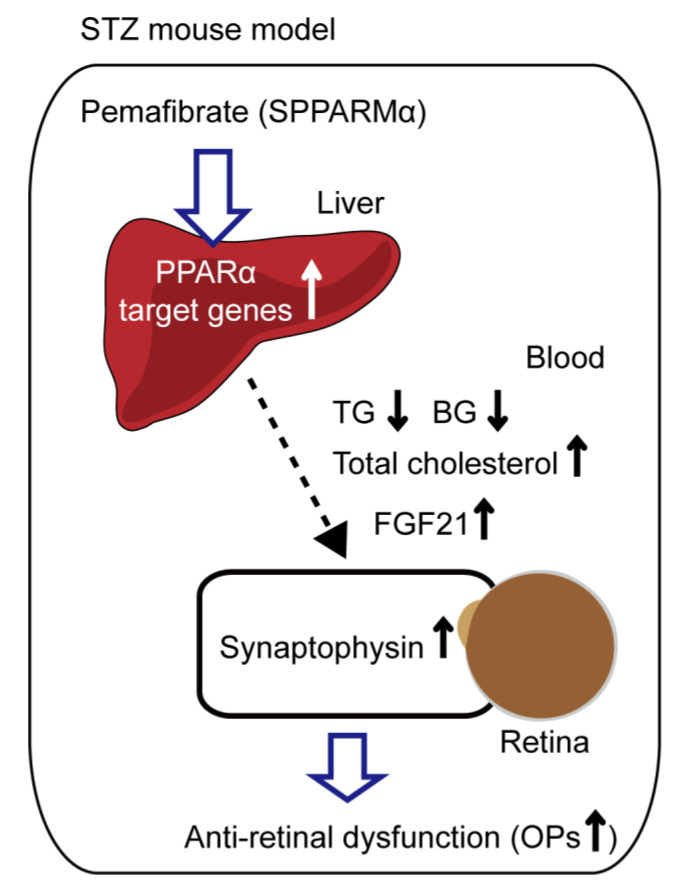Figure 7.
The working hypothesis of the protective mechanism against retinal dysfunction by the administration of pemafibrate in an STZ-induced diabetic mouse model. A possible mechanism for prevention against retinal dysfunction in diabetes is that systemic selective PPARα modulator (SPPARMα) pemafibrate administration boosts liver function and upregulates PPARα target genes in the liver, and an increased level of serum FGF21 improves lipid metabolism by decreasing triglyceride (TG) and increasing total cholesterol levels, mildly decreasing blood glucose level, and finally resulting in an increase in retinal synaptophysin expression and prevention against reduced amplitudes of OPs.

